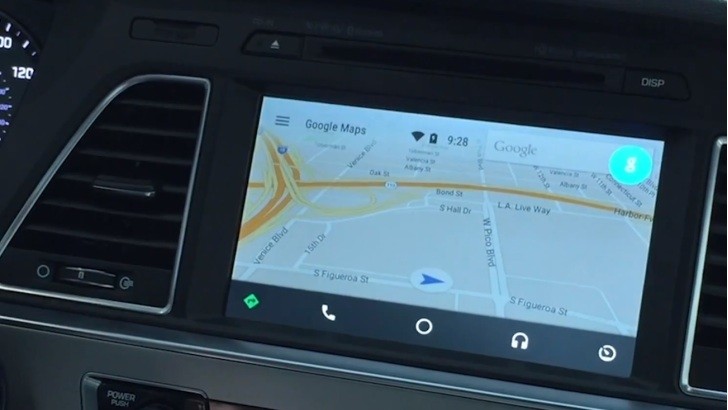The auto industry is orienting towards simplifying infotainment systems and how to do this better than with the help of major operating systems manufacturers like Microsoft, Apple and Google. The target is to cut down the costs by letting the client chose his own infotainment features by simply linking a smartphone to it.
Microsoft hasn’t put out its version yet, but Apple showed it’s Apple Car Play and so did Google with its Android Auto, which we’ll analyze here a bit thanks to Consumer Reports that got their hands first on he new product.
Just like it happens in the world of smartphones, the majority of automakers will offer the Android Auto feature on their cars, which is already a plus since most phone users run Android on their phones.
The system is fully functional as it’s here presented on a 2015 Hyundai Sonata and you’ll be able to tick mark the option starting next year. The smartphone mirroring system is basically relying on the Google Now platform, which offers you access to maps and navigation, phone calls, messaging, music broadcasting (including SoundCloud and Spotify) and voice control.
The system is also relying mostly on the smartphone resources so automakers have another reason to cut the production costs a bit more because they’ll use less powerful hardware.
Add in the fact that users won’t need to learn their way through a new infotainment interface each time they buy a new car, so you can say this is a win-win-win situation.
The only problem now is the fact that Android Auto will be working only with devices running Android 5.0 Lollipop and higher. But that won’t be a major issue if you’re not switching to Nexus right quick. Lollipop will slowly roll into most current generation phones, including HTC One, Samsung Galaxy S4/S5, Sony Xperia Z and others.
Just like it happens in the world of smartphones, the majority of automakers will offer the Android Auto feature on their cars, which is already a plus since most phone users run Android on their phones.
The system is fully functional as it’s here presented on a 2015 Hyundai Sonata and you’ll be able to tick mark the option starting next year. The smartphone mirroring system is basically relying on the Google Now platform, which offers you access to maps and navigation, phone calls, messaging, music broadcasting (including SoundCloud and Spotify) and voice control.
Working principle and advantages
Just like Apple Car Play, Android Auto mirrors some of the smartphone’s capabilities on your car display system. And since almost everyone now has a smartphone, automakers will soon ditch their dedicated interfaces for infotainment systems, which sometimes are laggy, look ugly and tent to be very complex and distracting to use.The system is also relying mostly on the smartphone resources so automakers have another reason to cut the production costs a bit more because they’ll use less powerful hardware.
Add in the fact that users won’t need to learn their way through a new infotainment interface each time they buy a new car, so you can say this is a win-win-win situation.
The only problem now is the fact that Android Auto will be working only with devices running Android 5.0 Lollipop and higher. But that won’t be a major issue if you’re not switching to Nexus right quick. Lollipop will slowly roll into most current generation phones, including HTC One, Samsung Galaxy S4/S5, Sony Xperia Z and others.

